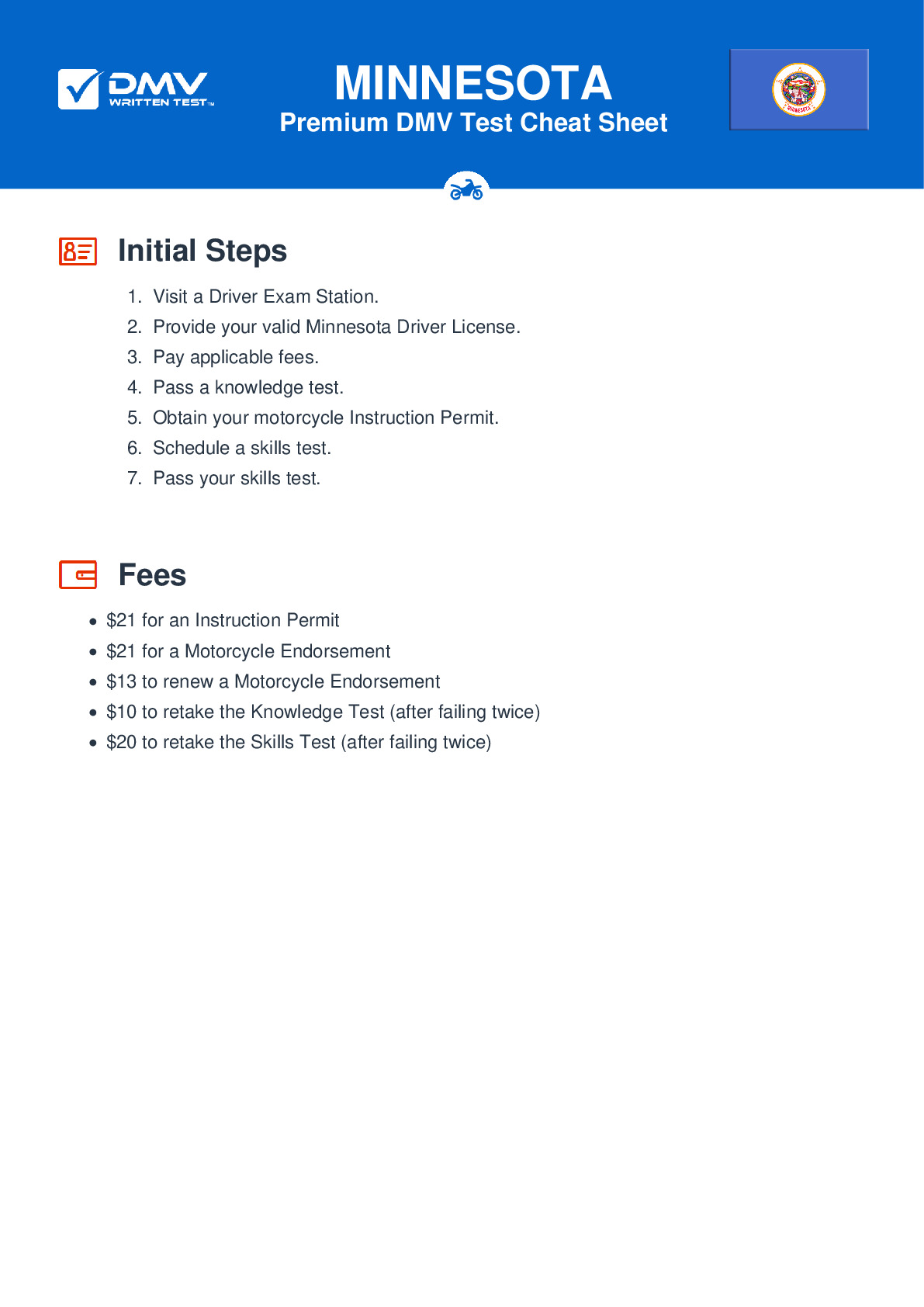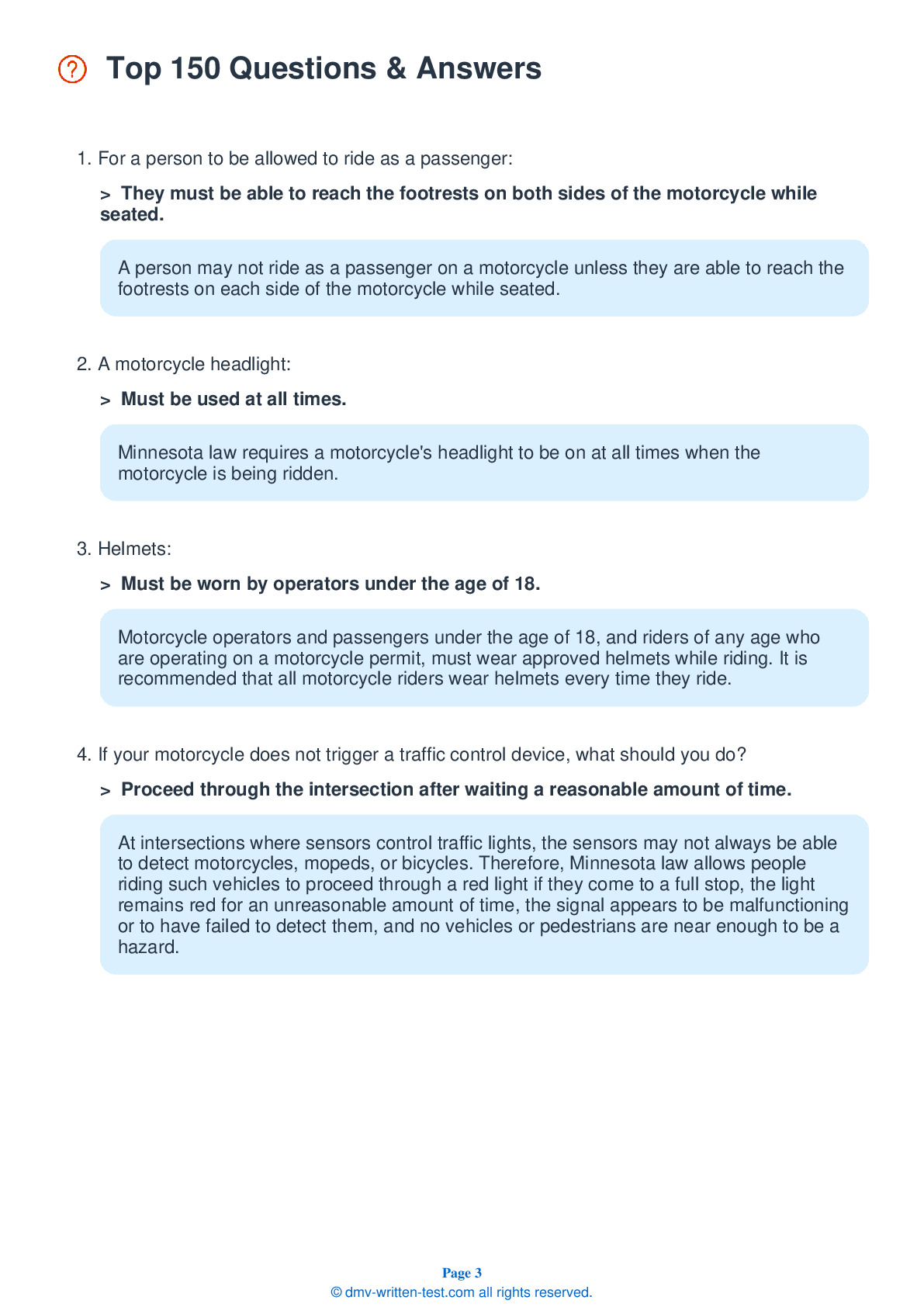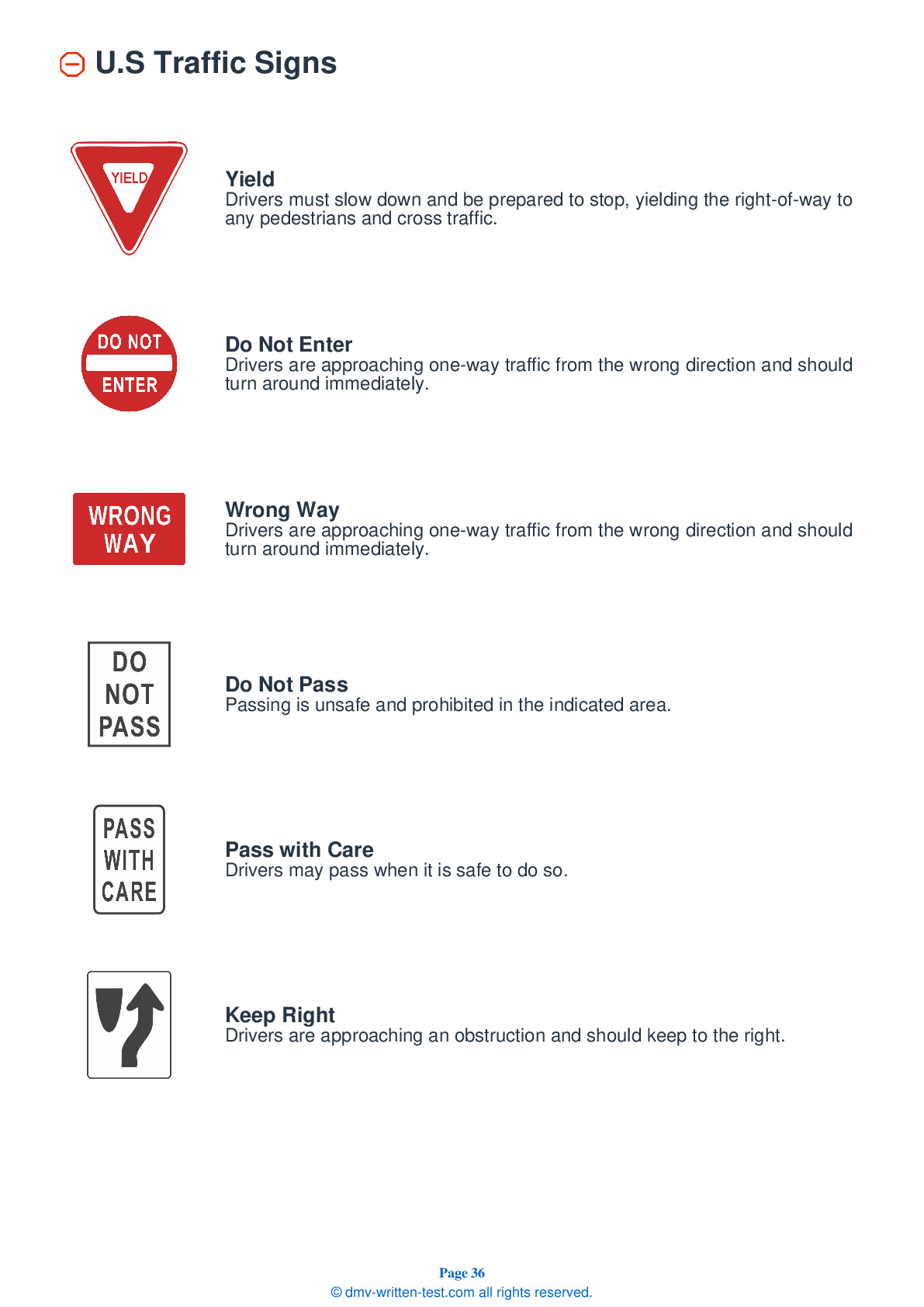2025 Minnesota Motorcycle Permit Test 10
The following questions are from real DMV written motorcycle permit tests. These are some of the actual permit questions you will face in Minnesota when getting your motorcycle learners permit. Each motorcycle theory practice test question has three answer choices. Select one answer for each question and select "grade this section." You can find this button at the bottom of the drivers license quiz. For a complete list of questions and answers for Minnesota please visit https://cheat-sheets.dmv-written-test.com/en/minnesota/motorcycle.
Number of Tests
Number of Question
Passing Score
25. How much of a motorcycle's total braking power can the front brake supply?
Explanation
The front brake of a motorcycle is more powerful than the rear brake. It supplies at least three-quarters of the motorcycle's total stopping power.
26. Passengers should:
Explanation
Before riding while carrying a passenger, you should instruct your passenger to lean with you through turns and curves. They should hold onto your waist, hips, or belt.
27. When riding with a heavy load, you will want to adjust the:
Explanation
Before riding with a heavy load, you should make sure your tire pressure, spring pre-load, air shocks, and dampers are at the settings recommended for the relevant weight.
28. A wobble, or shaking of the front wheel and handlebars, may be caused by:
Explanation
Most wobbles are caused by improper loading of the motorcycle, unsuitable accessories, or incorrect tire pressure.
29. A rectangular sign may be a:
Explanation
Signs informing road users of road regulations, such as speed limits, are normally rectangular and colored white with black lettering or symbols. Riders must follow the rules posted on these regulatory signs.
30. If you must brake and swerve to avoid a hazard, you should:
Explanation
If a hazard requires you to brake and swerve to avoid a collision, you should take the actions separately. Do not brake while swerving because doing so may cause your motorcycle to fall over.
31. When riding at night, a motorcyclist should maintain a minimum following distance of:
Explanation
Because it is more difficult to see and judge distances in the dark than in daylight, you should maintain an expanded following distance of at least three seconds when riding at night. It may take you longer than usual to realize the vehicle in front of you has stopped and you may need additional time to slow or stop to avoid hitting the vehicle.
32. During the day, you should:
Explanation




